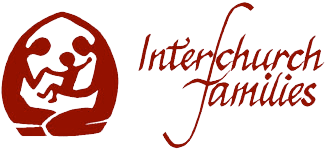LIBRARY RESOURCE
LIVING AS INTERCHURCH FAMILIES
By virtue of their situation, interchurch families need a particular kind of pastoral care from their priests and ministers. The papers in this section of the library illustrate how this need has been expressed over the years. Some of the articles were written several years ago but the needs they describe are as fresh today as they were when the articles were written. More on Interchurch marriages can be
seen here.
-
Interchurch Families in the UK: Living as Domestic church, not expecting too much: never satisfied with too little
Interchurch Families in the UK: Living as Domestic Church, not expecting too much; never being satisfied with too little.
Written by Doral Hayes, Executive Development Officer AIF
This paper was requested for the INTAMS Review following attendance at the INTAMS symposium in Rome in September 2015 prior to the Synod on the Family in October 2016. The request was for a paper considering of the experience and expectations of people in interchurch families in the UK of the synod process.
-
Synod on the Family 2015 – response to preparatory questions by Interchurch Families International Network
Following the Synod on the Family in October 2015 in Rome Ruth Reardon, Life President of AIF wrote a report outlining the activity and place of Interchurch Families in this process.
-
Synod on the Family – initial report of synod proceedings by Ruth Reardon
The Interchurch Families International Network, a loose network of groups of interchurch families from across the world, has submitted a response to one of the questions posed by the Vatican in its preparatory document – “Does current legislation provide a valid response to the challenges resulting from mixed marriages or interreligious marriages?” Following the circulation of an initial late last year a number of comments were received and a final paper was submitted to Cardinal Baldisseri at the Synod Office in Rome by the co-ordinator of the network, Professor Thomas Knieps of Leuven University in Belgium.
The response suggests that the working document for the Synod could usefully include a section devoted to the concerns of mixed and interreligious families. It particularly asks that consideration be given to revising the terminology “mixed marriages” when it refers to mixed marriages between baptised Christians and suggests that the term “Interchurch Families” should be recognised as a suitable parallel description to “interreligious families”.
The paper goes on to describe, briefly, the mission of interchurch families and to ask for consideration of four issues that impact on them – pastoral attention to the way in which interchurch couples are prepared for marriage preparation; the need for a pre-nuptial “promise”; support for interchurch families in bringing up their children; and a more explicit statement that interchurch spouses who express a real desire for eucharistic sharing, and who fulfill the criteria for admission, can be allowed to receive communion alongside their Catholic partners on an on-going basis, whenever they are at Mass together.
-
Amoris Laetitia – the Joy of Love” – Pope Francis’s Exhortation published in response to the Synod on the family 2015
“Amoris Laetitia – the Joy of Love” – Pope Francis’s Exhortation published in response to the Synod on the family 2015
‘We believe that, as interchurch families, we have a significant and unique contribution to make to our churches’ Rome (Second World gathering of Interchurch families - 2003)
When an interchurch family has an important celebration, they often invite both clergy and congregations to participate, and this can help others to see the reality and joy of Christian unity in a way that no reading or hearing about it will do. It can happen at their wedding, at the baptism or dedication of their child, a first communion, a young person’s confirmation or profession of faith, a wedding anniversary, a funeral.
Interchurch families are motivated to be active in ecumenical structures at all levels. In local Churches Together they are often to be found promoting study groups, Bible and prayer groups, as well as participating in joint mission and service in the community. As an association, AIF has encouraged its members to work in intermediate ecumenical structures, and has itself been a body-in-association with Churches Together in England and Churches Together in Britain and Ireland, playing a full part in their work. Its members have served on bilateral groups such as English ARC (the Anglican-Roman Catholic Commission) and the Methodist-Catholic Committee.
Above all, by their very existence as domestic churches related to two as yet separated church communities, interchurch families embody Christian unity in their daily lives.
In 2003 a statement adopted by the Second World Gathering of Interchurch Families at Rome said: ‘We believe that, as interchurch families, we have a significant and unique contribution to make to our churches’ growth in visible Christian unity. Many people in our churches have told us that we are pioneers. As two baptised Christians who are members of two different, and as yet separated Christian traditions, we have come together in the covenant of marriage to form one Christian family. As we grow into that unity, we begin and continue to share in the life and worship of each other’s church communities. We develop a love and understanding not only of one another, but also of the churches that have given each of us our religious and spiritual identity. In this way interchurch families can become both a sign of unity and a means to grow towards unity. We believe that interchurch families can form a connective tissue helping in a small way to bring our churches together in the one Body of Christ.’
Interchurch partners live in one another’s traditions as well as their own. They can be ambassadors for their own tradition in their partner’s church, helping to build up understanding and love between congregations.
